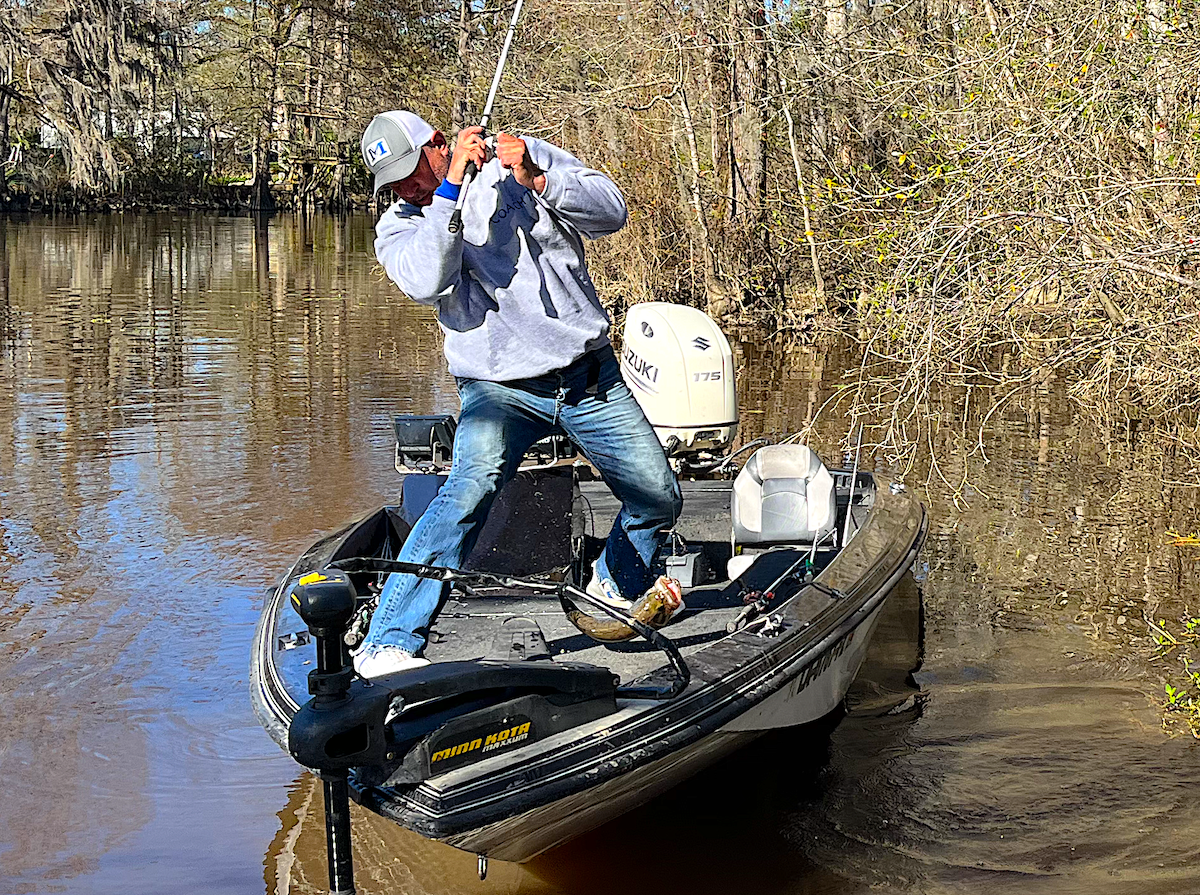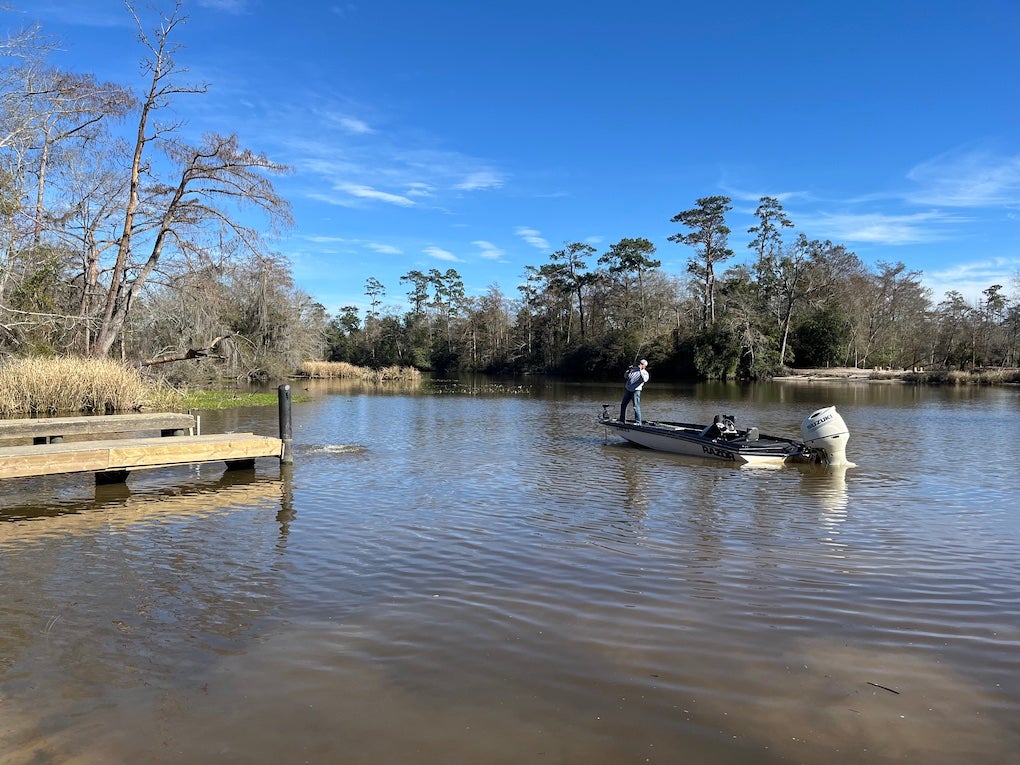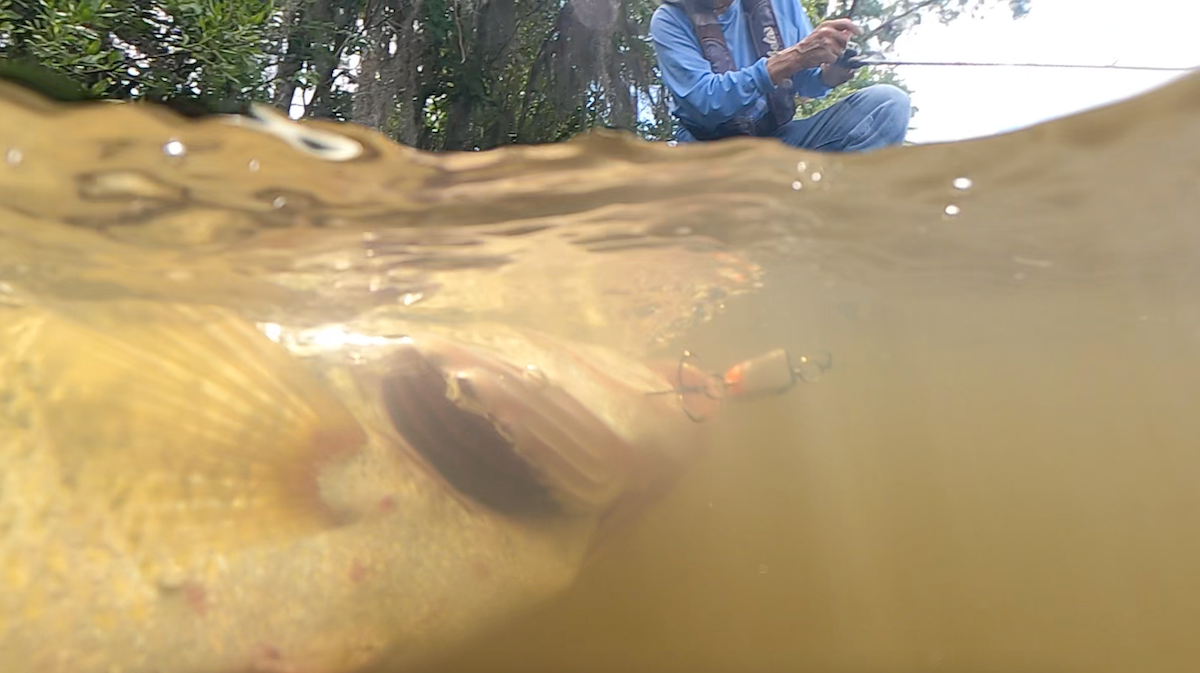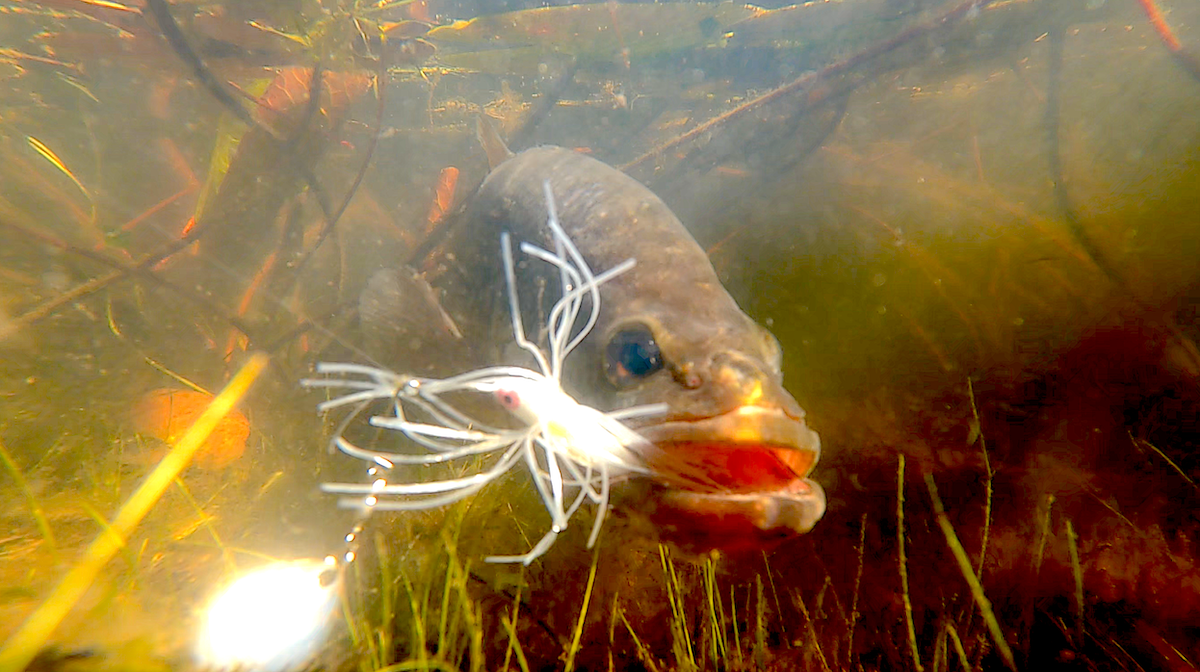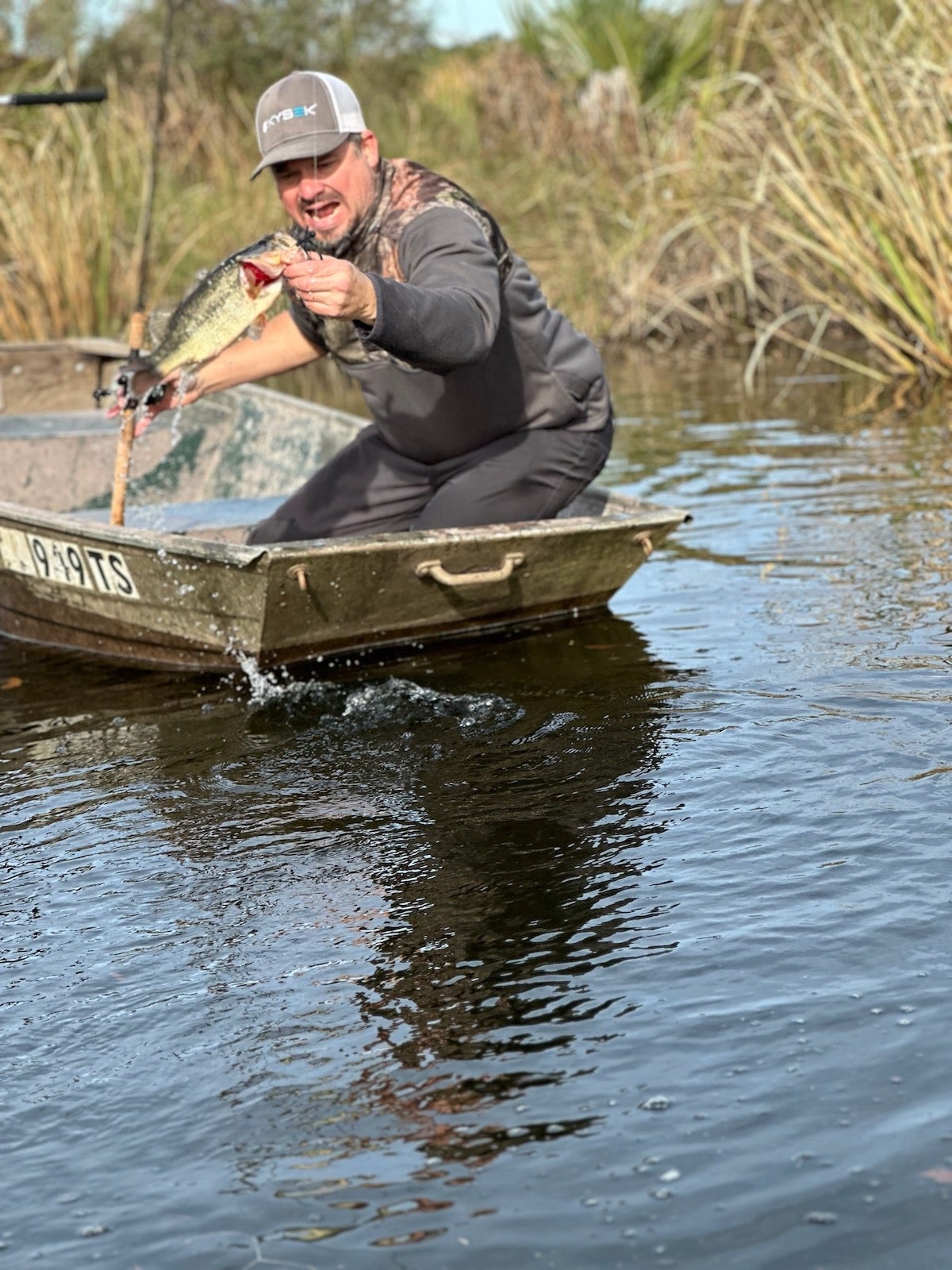The first bass I ever caught felt like hooking into pure lightning. I was twelve years old, standing knee-deep in a murky Southeast Louisiana pond, when that three-pound largemouth hammered my homemade spinner-worm rig and nearly yanked the rod from my hands. That explosive moment ignited a lifelong obsession that’s taken me from backwater bayous to pristine northern lakes. Bass fishing isn’t just a hobby—it’s a hobby that connects me to something wild and unpredictable. I’ve spent countless dawn patrols and dusk missions pursuing largemouth bass, learning their habits through trial and error, success and failure, all in a pursuit to catch bass.
What makes bass fishing so addictive isn’t just the explosive strikes or the aerial acrobatics when they try to throw your hook; it’s the mental chess match. You’re not just fishing – you’re hunting! Whether you’re just starting out or looking to sharpen your skills, this guide will arm you with the tactical knowledge to put more bass in your boat and create those unforgettable moments that keep us coming back to the water.
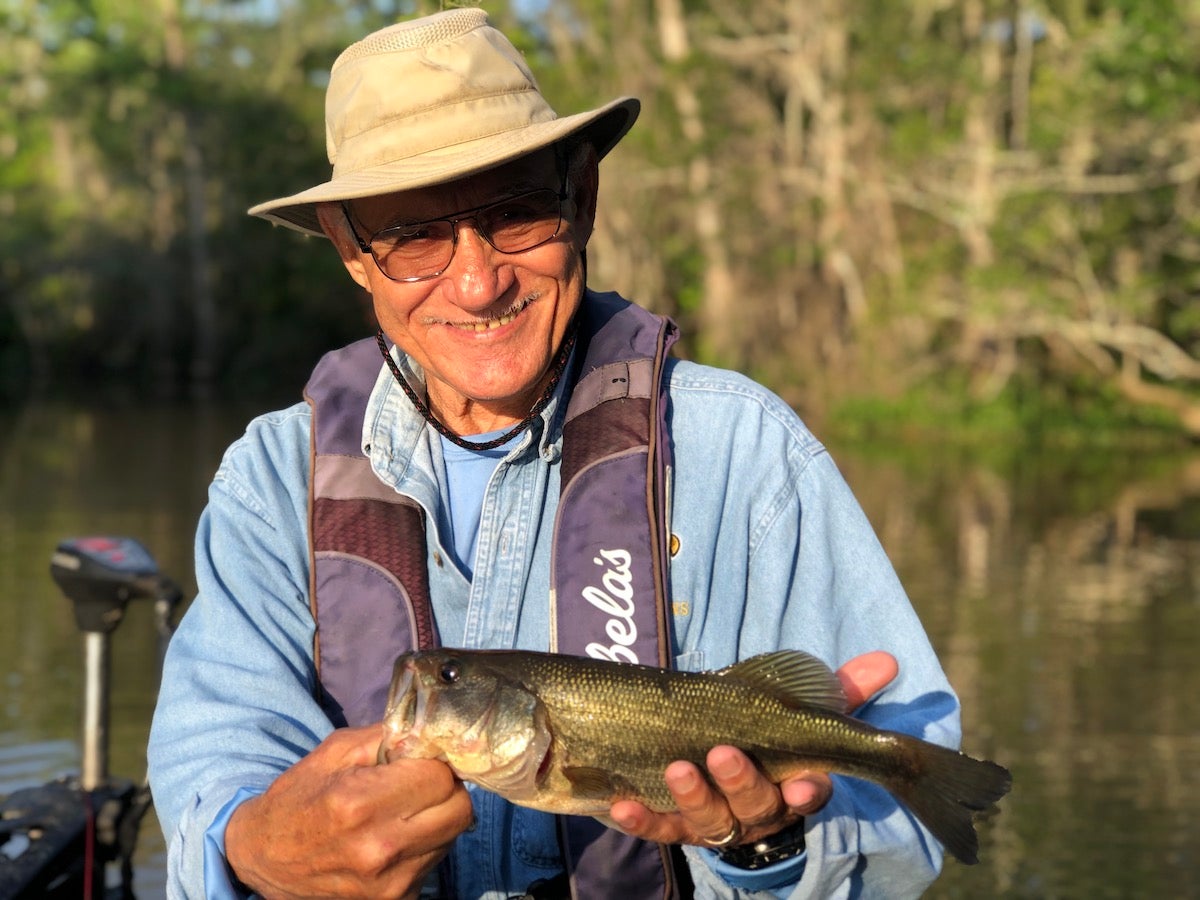
Prime Bass Locations
Bass are apex predators that follow a simple rule: position themselves to expend minimal energy while maximizing feeding opportunities. The small ponds across Southeast Louisiana where I cut my teeth are perfect training grounds for learning these patterns, but these principles apply to bass waters nationwide.
Structure and Cover
Bass relate to two key elements: structure (bottom contours like points, humps, and channels) and cover (objects that provide concealment). Understanding the difference is crucial. Structure dictates where bass position themselves seasonally, while cover determines their day-to-day feeding stations.
Target these high-percentage zones:
Wood Cover
Submerged timber, fallen trees, and laydowns are bass magnets. A single deadfall can hold multiple fish. Position your boat to hit multiple angles, focusing on where branches intersect with depth changes or currents. During summer, target the deepest parts of the wood; in spring, focus on the shallowest sections. When fishing standing timber, probe the shady side first; bass often orient to the shadows.
Vegetation
Thick grass beds, lily pad fields, and hydrilla mats are prime ambush zones. Bass will bury in thick vegetation and explode outward to attack prey. The edges where grass meets open water are consistently productive, especially where the vegetation line breaks or forms points. During midday heat, punching through thick mats with heavy tungsten weights can produce monster strikes from bass seeking cooler water underneath.
Hard Structure
Boat docks, piers, and marinas offer shade, protection, and abundant forage. Skip baits deep under floating docks where other anglers can’t reach. Focus on corners, pilings, and the deepest sections. Rocks, riprap, and concrete walls hold heat and attract crawfish—a prime bass food source. During pre-spawn, these heat-retaining structures warm faster than surrounding areas, drawing bass in first.
Transition Zones
The most overlooked trophy spots are where habitat changes occur; where rock bottom transitions to sand, where shallow flats drop into channels, or where two types of vegetation meet. These transition zones create natural feeding stations. Bass use these edges as travel routes and ambush points. Find a transition zone with additional cover like a laydown or dock, and you’ve discovered a potential honey hole.
Strategic Approaches by Season
During spring pre-spawn, target south-facing banks that warm first and secondary points leading into spawning coves. In summer, focus on offshore structure and deep vegetation lines. Fall brings bass back to the shallows, making creek channels and baitfish-holding cover primary targets. Winter demands a slower approach, targeting vertical structure where bass can easily move up or down the water column with minimal energy expenditure.
One killer strategy is forcing your lures into zones other anglers are too afraid to fish. Skip baits under overhanging trees and docks. Punch through thick mats. Drive lures deep into gnarly cover. The biggest fish often hold in these hard-to-reach sanctuaries, precisely because most fishermen avoid these potential snag areas. I’ve pulled seven-pounders from log jams that looked impenetrable but yielded to precise casting and a stout rod.
Remember, bass positioning follows a predictable pattern; find the right cover intersecting with the right structure during the right seasonal timing, and you’ll consistently connect with quality fish.
Strategic Timing
Understanding when bass are most aggressive will dramatically increase your hook-up ratio. Low light periods—dawn and dusk—give you a serious edge. Bass have evolved to feed most actively during these transition periods when they have the advantage over their prey.
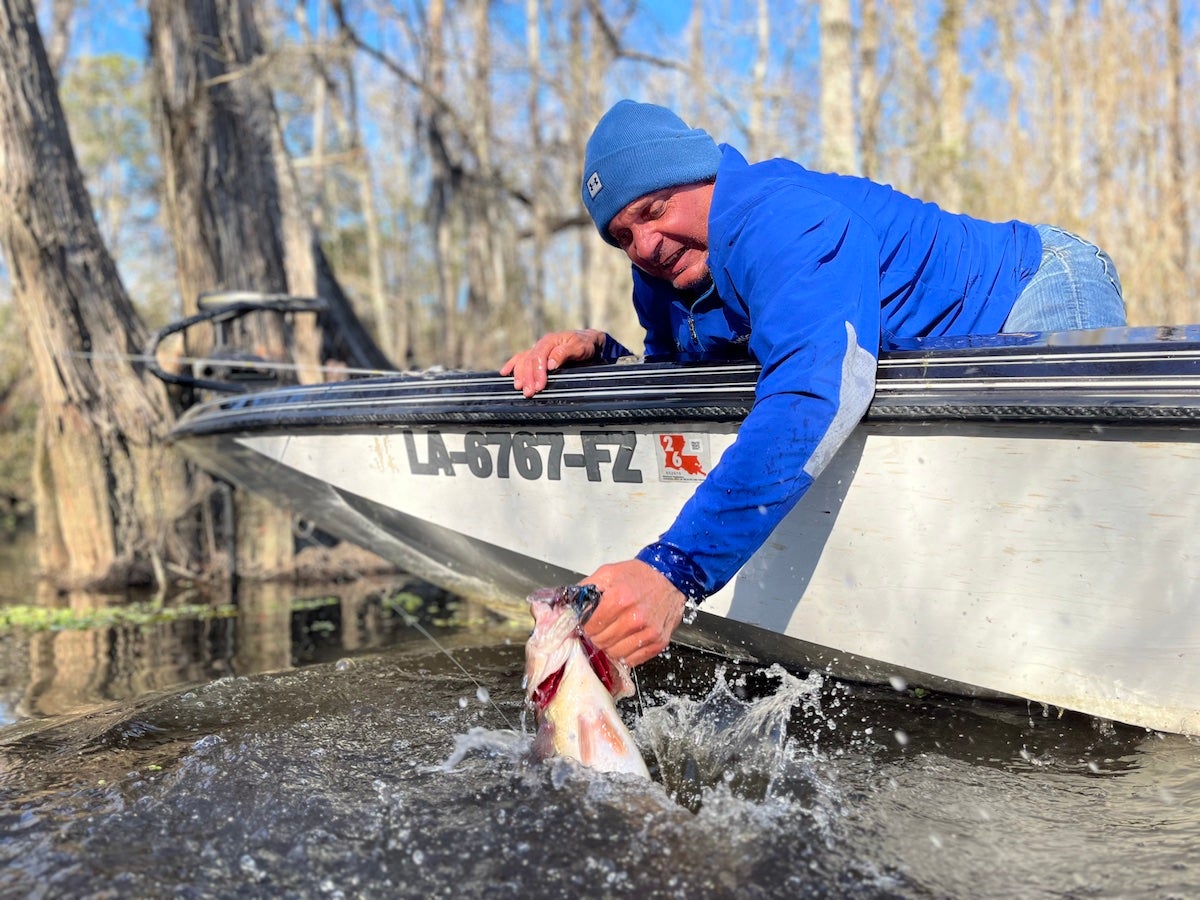
Spring and early summer are prime times to target trophy bass. Many lake records fall during the pre-spawn period when females feed aggressively before the spawn. Bass operate at peak performance in 60-75 degree water. The closer you hit this temperature sweet spot, the more aggressively they’ll hammer your lures.
Gear Selection
When it comes to largemouth bass, I say forget those wimpy ultra-light setups. Sure ultralight is fun and allows you to finesse fish, but in the end, you’re looking for a big bass to hang on your wall. You need equipment that can handle the punishment bass dish out. A medium-heavy 7-foot spinning rod paired with a quality size 2000 spinning reel gives you the backbone to drive hooks home and the control to manhandle fish during the fight. For line, 6-8 pound test fluorocarbon provides the perfect balance of stealth and strength.
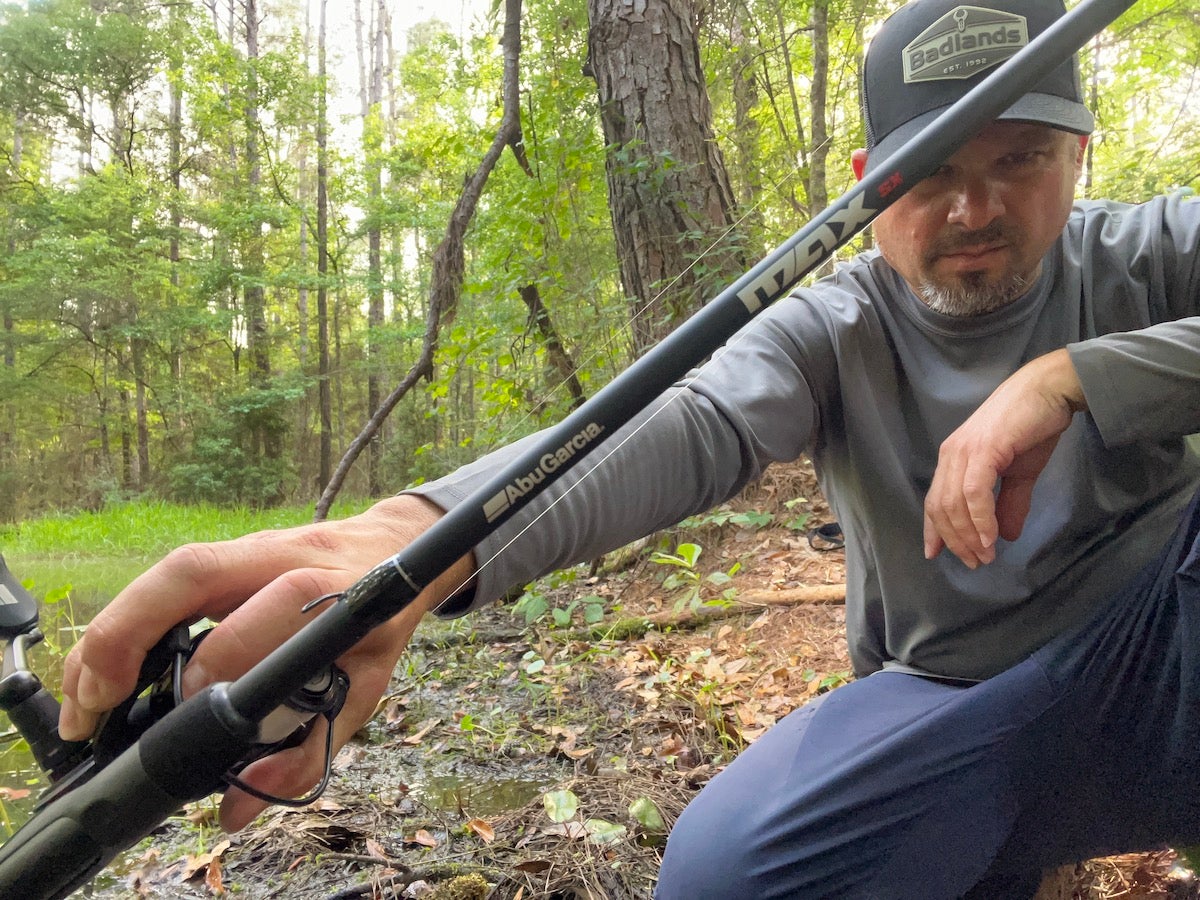
This combination lets you feel every subtle tap and teaches you how these bruisers react after being hooked. Don’t expect to start landing trophy bass immediately. Begin with smaller fish to sharpen your skills—the monsters will come with time.
Battle-Tested Lure Selection
Don’t waste money stocking every lure on the market. Focus on these proven weapons:
Crankbaits
Crankbaits let you cover water efficiently and trigger reaction strikes. In clear, calm conditions, use a steady retrieve with natural colors. Switch to erratic, stop-and-go retrieves with bright patterns in stained or choppy water. Bumping crankbaits against structure often triggers violent strikes.
Spinnerbaits
Spinnerbaits excel at creating flash and vibration that bass can’t resist. Keep them just below the surface to create an attractive wake. When a fish strikes, set the hook hard—bass will spit these baits quickly once they realize they’ve been fooled.
Plastic Worms
Plastic worms represent one of the most natural bass foods and shine when fish are pressured or sluggish. This technique demands patience but delivers results. When a bass takes the worm, resist the urge to set the hook immediately. Let the fish load up before driving the steel home.
My Secret Weapon
My deadliest creation is a plastic worm on a weedless hook connected to a safety pin spinner. This hybrid setup lets me work a worm higher in the water column with added flash and vibration. I use a large gold Colorado blade that pushes water rather than slicing through it, keeping the bait in the strike zone longer. This rig has put countless bass in the boat when nothing else would.
Advanced Tactical Approaches
“Dominate Hard-to-Reach Zones”
One strategy that’s consistently produced is forcing my lures into places other anglers fear to cast. Most fishermen avoid potential snag areas, but that’s precisely where the biggest, smartest bass often hide.
“Track the Forage”
The single most critical factor in locating bass is finding their food source. This might be shad schools, crawfish, or juvenile panfish. Where there’s food, there will be bass. Use your electronics to locate baitfish or visually identify areas where forage is present.
“Master Seasonal Patterns”
Bass behavior follows predictable seasonal migrations. In spring, they push shallow as water temps approach 65 degrees. Post-spawn, they recover on mid-depth structure before moving deep in summer. Fall triggers a feeding frenzy in shallow zones before winter drives them back to deep structure.
Final Thoughts
Bass fishing demands skill, patience, and calculated aggression. Don’t get discouraged if you don’t boat a trophy on your first outing. Focus on learning the fundamentals and building confidence with consistent action.
Besides being America’s most challenging gamefish, bass make excellent table fare when properly prepared. Whether you practice catch and release or keep a few for the fryer, bass fishing delivers unmatched excitement and satisfaction.
Remember—every elite angler started somewhere. Get on the water, test different techniques, and experience the rush when a big bass crushes your lure and tests your skill in the fight that follows.
The post How to Catch Bass in 2025: Everything You Need to Know appeared first on AllOutdoor.com.


